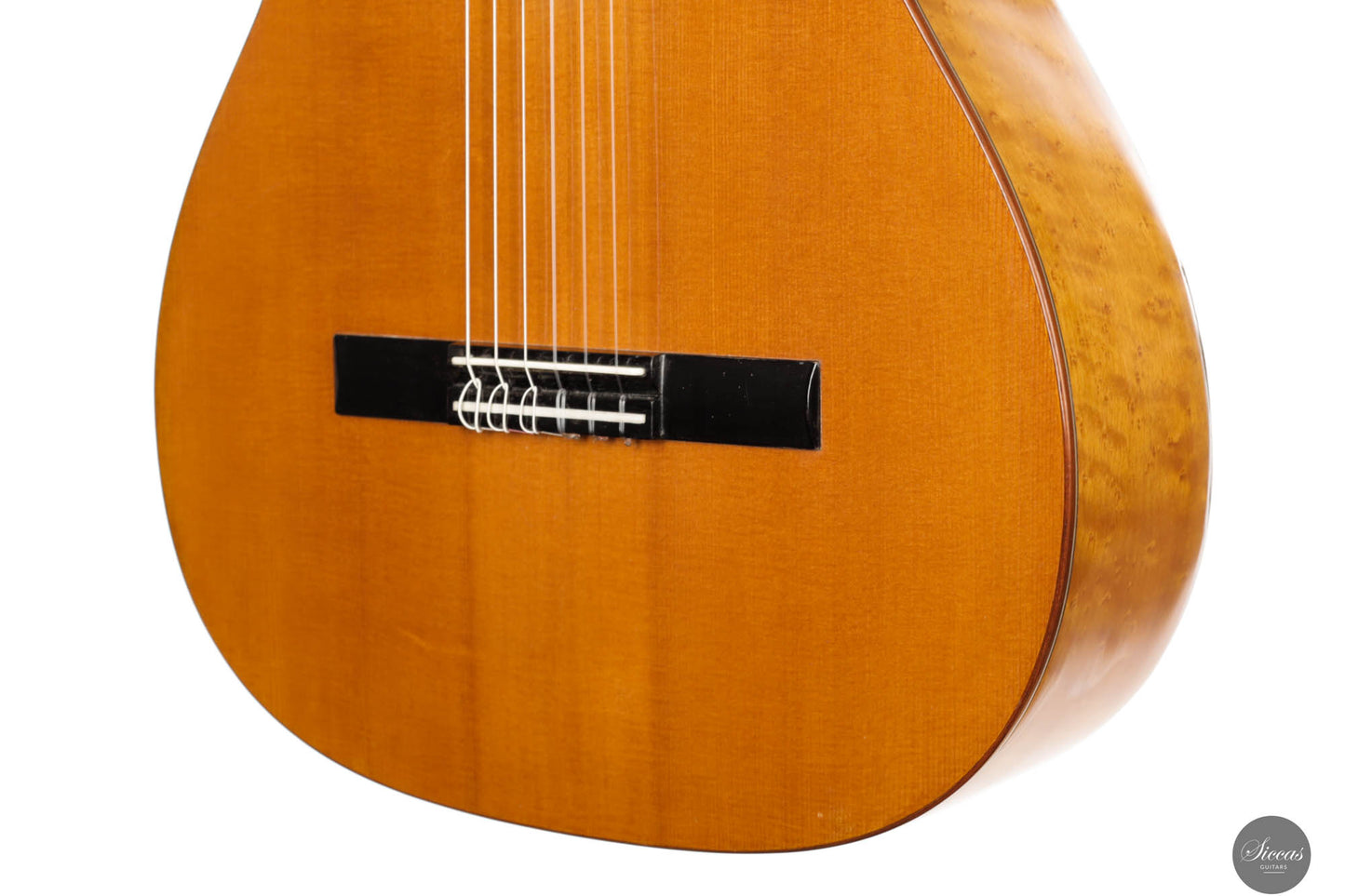Richard Jacob Weissgerber - 1929 - /50 No.030.1/7
Richard Jacob Weissgerber - 1929 - /50 No.030.1/7
Details
Details
Overview
Overview
Shipping important note
Shipping important note
Delivery times are typically reliable and most instruments arrive within the estimated timeframe.
Should any unexpected delay occur, our team will keep you informed and provide support at every step. For all shipping details and exceptions, please see our Shipping Policy.
Details about GPSR
Details about GPSR






















Video overview



More details about the guitar
About the luthier
Richard Jacob Weissgerber was one of the most prolific, innovative and versatile luthiers of the 20th century, known for his artistic creativity and meticulous craftsmanship. His instruments are distinguished by their variety in design and construction, making them highly sought after by collectors and musicians alike. Weissgerber’s legacy is deeply rooted in the German tradition of guitar making, yet his unique approach set him apart as a master craftsman whose work continues to captivate guitar enthusiasts worldwide.About the guitar
This exquisite guitar is a remarkable testament to Weissgerber’s artistry. It features a finely aged spruce top, paired with stunning birdseye maple back and sides—an elegant tonewood choice that enhances both the visual appeal and the guitar’s tonal characteristics. The instrument is finished with a delicate French polish, which not only preserves its natural beauty but also allows the wood to resonate freely, contributing to its rich and expressive voice. Tonally, this guitar delivers a bright, direct and articulate sound, with an impressive balance across registers. The air body resonance at G/G#, together with the maple, bring out a very pleasing brightness both in basses and trebles. The basses still have depth and good projection. The guitar projects remarkably well, and boasts a broad dynamic range. The instrument is equipped with its original Landstorfer tuners and includes its original case. It is in very good condition, showing minimal signs of wear on the top. There is a prominent crack on the back that has been professionally repaired and is considered stable. As a well-preserved example of Weissgerber’s craftsmanship, this guitar is a rare find, offering a unique combination of historical significance, aesthetic beauty, and outstanding tonal qualities.Regular care extends the life of the instrument
Even with careful use, a classical guitar may gradually change in appearance or respond to unstable storage conditions. Have a close look at your guitar regularly and be attentif to changes. If your instrument is suffering from its environement, it will let you know.
Protect Your Guitar: Handle with Care
Be mindful when touching your instrument with greasy or unwashed hands: any skin contact is a small attack on the varnish. Of course, a guitar is made to be played, but taking a few precautions helps preserve its beauty: wash your hands before playing, wear long sleeves, and avoid unnecessary direct skin contact with the body of the instrument.
Pro tip: Avoid playing with a button-up shirt, heavy jewelry, or a belt, as these can scratch the guitar. Also, make sure your guitar case is free of any objects that could damage the instrument during storage.
String care
A good habit to adopt is wiping down your strings briefly after each playing session. This small action significantly extends their lifespan and helps maintain a consistent, comfortable feel under your fingers.
Most importantly, clean strings are essential for keeping your instrument in tune. Corrosion, sweat, and dust can affect the uniformity of the strings and interfere with accurate tuning across the entire fingerboard.
Pro tip: If you're having trouble getting your guitar in tune, it might be time to change the strings. A useful test is to compare the pitch of the 12th fret harmonic with the fretted note at the 12th fret; if there's an unusually large gap between them, your strings may have lost their integrity and should be replaced.
Keep Your Shellac Finish Shining!
Got a guitar with a shellac (French polish) finish? Here's a simple trick: Take a clean microfiber cloth and gently breathe on the surface to create a light mist. Then, softly rub to remove fingerprints, sweat, and grease. That’s usually all it takes to keep it looking great, no products needed!
Pro tip: Every few years, treat your guitar to a check-up with a luthier to keep it in top shape.
Storing Your Guitar: Climate Matters
Your guitar can safely stay outside its case, as long as the surrounding environment maintains 42–55% humidity and a temperature between 18–25°C.
Keep in mind that humidity levels can still fluctuate inside the case, especially during seasonal changes.
- Too much humidity may cause overtightened strings and a dull tone.
- Too little humidity can lead to a bulging top, string buzz, or even cracks.
Avoid placing your guitar near radiators, air conditioners, or windows with direct sunlight.
Pro tip: Always close your guitar case while playing. This helps preserve a stable microclimate inside the case, so your instrument is protected the moment you put it back in.
















































